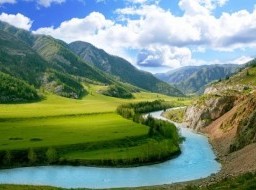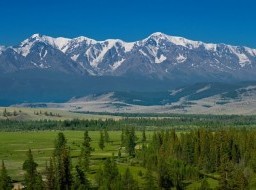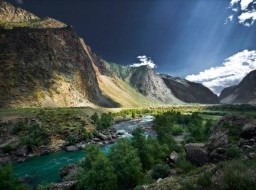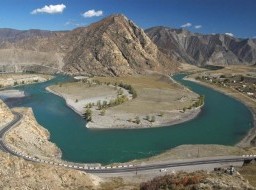Chemal village
Chemal is a village, the administrative center of Chemalsky district of the Altai Republic. The village was founded in 1885. Through the village passes Chemal tract. The village is located 100 km south of Gorno-Altaisk, between the mouth of the Chemal and Katun rivers. Chemal is in a relatively wide valley, surrounded by spurs of the Iolgo range. In the southern part of the village there is Chemal HPP, one of the first hydroelectric power stations in the region, built in 1935. Chemal is one of the most visited and popular places in the Altai Mountains, known for its favorable climate, numerous sights and a large number of recreation centers, hotels, tourist complexes. Chemal has long been known as a climatic health resort, thanks to its soft microclimate. The sun, mild winter, moderately hot summer. According to the average annual relative humidity, Chemal is in the same conditions with Yalta and Anapa. In Chemal, a unique air with a high content of ozone and essential oils. Chemal is located at an altitude of 430 m. History Chemal was formed in the beginning of the XIX century by Old Believers. The first information about Chemal appeared in 1830. In 1842, 30 peasant families from the Smolensk volost of the Biysk district settled in the mountain wilderness with the consent of Kalmyk nomads. This year is considered the year of the village's formation. In 1849 a missionary camp was established here. Since the 50-ies of the XIX century. The development of the village went under the vigilant control of the Altai spiritual mission. The immediate founder of the mission was Makary Glukharev. Makarii thirty-six years of missionary work in the Altai, penetrating into the most remote corners, and now difficult to access, converted the Altaians to the Orthodox faith, taught them to read and write. After Mountain Altai, he was Bishop of Biysk for seven years and headed the Altai spiritual mission. According to the charter of the Orthodox missionary society, mission members were given the right to organize villages and educational institutions. Missionaries converted the local population into the Christian faith, accustomed them to a settled life, gave the basics of knowledge on agriculture, housekeeping.
|








